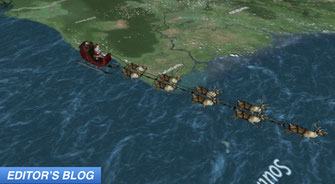
The Native Hawaiian Legal Corporation (NHLC) issued a statement late last week saying that a circuit court judge has invalidated a 2014 decision by the Board of Land and Natural Resources that approved a sublease between the University of Hawaii and the Thirty Meter Telescope International Observatory (TIO).
At issue is an effort to build one of the largest, state of the art, telescopes on Mauna Kea, a dormant volcano sacred in Native Hawaiian culture. Two years ago a group of protestors climbed Mauna Kea and managed to halt construction before it began but did not stop the process entirely. Instead, the dispute moved to a contested case hearing which is currently underway. NHLC attorney David Kauila Kopper said that, "With a sublease in place throughout the hearing...the Board's approval of the permit [to build the telescope] would be a foregone conclusion."
To astronomers, Mauna Kea is an ideal place for world class telescopes because it stands at an altitude of roughly 14,000 feet and there is little atmospheric disturbance, meaning the telescopes have a relatively clear view into space. But, according to a report by Kumu Pono Associates, LLC prepared for the University of Hawaii Office of Mauna Kea Management, in Hawaiian culture, Mauna Kea is a mountain son born to Wakea and Papa, the same two that begat the Hawaiian people. Mauna Kea is part of a larger sacred landscape and connects the earth to the heavens.
There are currently 13 smaller telescopes on Mauna Kea. The Thirty Meter telescope would be one of the biggest telescopes in the world and would produce images with 12 times the clarity of Hubble. In October, the TIO announced that if it cannot get approval to build the telescope in Hawaii then it will likely build the telescope on La Palma in the Canary Islands, Spain.



